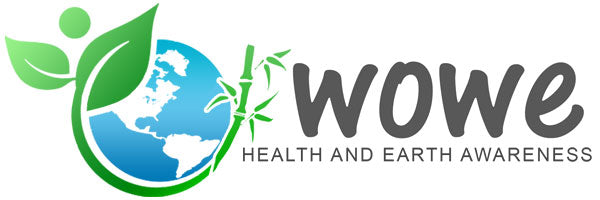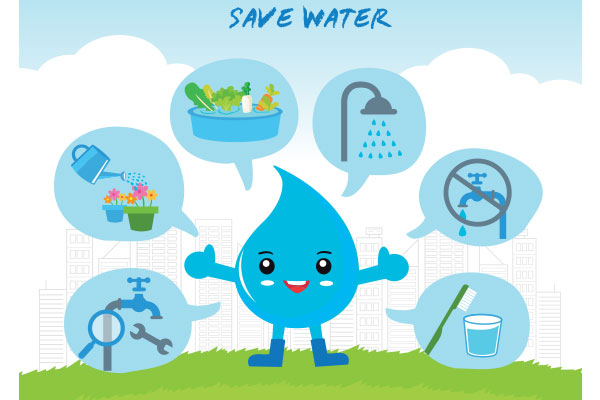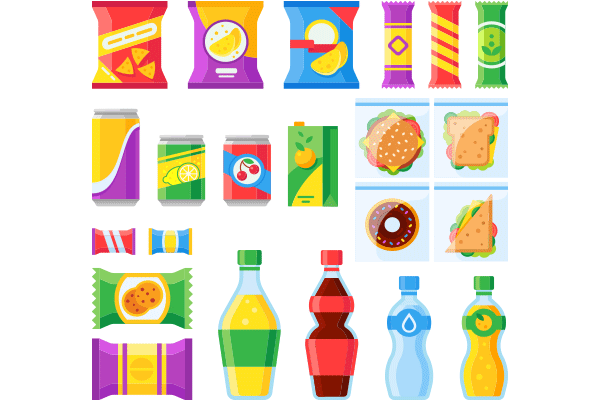Plastic is one of those materials that has been under scrutiny from environmentalists for decades. Now known as a major contributor to global pollution, plastic products and plastic manufacturers have come under fire, but that doesn’t mean they are slowing their work. Plastic products are still in high demand, partially due to the relatively low price of manufacturing plastic as compared to other materials, and partially due to the perceived inconvenience of switching to eco-friendly alternatives.
If you have yet to be convinced it is time for you to ditch plastic, you may not yet be ready to make a change, or perhaps you just have yet to hear the right information. In this article, we will cover just a few of the myriad of reasons you should ditch plastic for good. In these 10 facts, you will discover the truth about plastic, learn how plastic and plastic manufacturing impact the environment, and discover some awesome and convenient alternatives.
1. Only 9% of all Plastic Produced Since the 1950s has been Recycled
Plastic has been a popular choice amongst manufacturers of both household and commercial products for decades. Though plastic has been all-the-rage since its inception, disposing of it sustainably has not. There has never been a sustainable method for plastic disposal, and that problem doesn’t seem to be changing any time soon.
Though plastic is a recyclable material, only 9% of the 8.3 billion tons of plastic produced worldwide since the 1950s have been recycled. Mixed plastic products, inattentive product users, and lackluster recycling efforts all contribute to the staggeringly low rate of plastic recycling, with the majority of plastic products finding their way to landfills or being left to pollute natural environments.
2. 73% of Worldwide Beach Litter is Plastic
Sure, we aren’t doing a great job recycling plastic, but how much plastic could possibly be polluting our natural ecosystems? The answer is: a lot. More than 73% of worldwide beach litter is made up of plastic, destroying not only the natural beauty of our planet’s lakes and oceans but also destroying their natural balance and health.
Beach litter is most often the result of careless beachgoers, those that toss their cigarette butts, plastic utensils, and plastic packaging behind them rather than walking the twenty feet to a trashcan. The plastic items not left by careless beachgoers are often dropped from cars, trucks, boats, and other passenger vehicles, or swept onto the beach by wind, rain, and stormy weather.
3. Plastic Kills More than 1.1 Million Seabirds and Marine Animals Every Year
All that plastic that washes up on the beach has to go somewhere, and more often than not, it is right into the ocean. Getting sucked into the ocean by the tides, plastic items like bags, soda rings, plastic straws, and so on find their way into the hungry mouths of seabirds, fish, ocean mammals, and so on. As plastic pollution has continued to rise, so have the premature deaths of marine animals around the world. Now, with plastic consumption all-too-common for marine life, an estimated 1.1 million seabirds and marine animals are being killed by plastic each and every year.
Once swallowed, plastic can be very difficult to regurgitate, leaving most marine animals that mistakenly nab a plastic spoon to live out the rest of their lives filled with plastic. Marine animals that do not eat the plastic are commonly found with plastic wrapped around their mouths, feat, or fins, lodged in their gills or somehow obstructing their breathing.
4. 90% of all Seabirds have Plastic Pieces in their Stomachs
Not all marine animals perish as a result of plastic consumption, but that doesn’t mean much for their health. Often unable to properly feed themselves or left lethargic and uncomfortable by plastic present in the body, seabirds, in particular, have taken a massive hit as a result of plastic pollution. Now, more than 90% of all seabirds are thought to have plastic pieces in their stomachs, a staggeringly high number that is certainly cause for alarm.
Along with a high-presence of plastic in seabirds, 1 in 3 marine species has been found entangled in plastic debris, and these numbers will only continue to rise should nothing be done about plastic pollution.
5. 50% of Plastic Products are Single-Use
Plastic was once touted for its relative longevity, a factor that has seemingly been forgotten during the last 50 years or so. Now, more than 50% of all plastic products are designed for a single-use before being discarded. Grocery bags, produce bags, plastic straws, plastic coffee cups, k-cups, plastic takeout containers, plastic q-tips, and so on are used at most for a few hours before being thrown away.
Though these single-use plastic items are often convenient as well as useful, that doesn’t mean there isn’t a better option. Why not invest in items that last longer than a single-use? Sure, buying a stainless steel straw might be slightly more expensive than a pack of plastic disposable straws, but your stainless steel straw will last for years or even decades without needing replacement. Purchasing organic cotton produce bags can help you avoid those flimsy produce bags from the grocery store, and will help you cut down your personal plastic pollution contribution.
6. Microplastics Can Spread for Miles
Though it might not seem like a big deal to see a soda bottle or two floating around in the ocean, what you don’t see are the billions of microplastics also circulating through our waterways. In a study done at Lake Erie, researchers found that 85% of plastic particles were less than a tenth of an inch, officially qualifying them as microplastics. Upon further investigation, it was concluded that between 1,500 and 1.7 million of these microplastic particles are present per square mile. So, though you might think that one soda bottle is no big deal, within a few years it will have broken down to microplastics and could single-handedly be polluting miles of ocean.
7. 93% of People Test Positive for BPA
In a study conducted by the CDC and the NHANES, 93% of people over the age of six tested positive for BPA. This controversial chemical has been at the center of human-health-based anti-plastic arguments for years and only recently has lost favor as a key ingredient in plastic manufacturing. The reason for this? BPA has been shown to have a negative impact on human health.
BPA is a synthetic estrogen that was commonly added to plastic products to increase strength and flexibility. Over time, BPA can leach out of plastic products and into whatever they contain. Because of this, most people have been exposed to BPA through food and beverage containers. The trouble with BPA is that, as a synthetic hormone, BPA can interact with other hormones in the body, potentially creating health problems for the individual. The effects of BPA are varied but evidence of infertility, precocious puberty, hormone-dependent cancers, and other serious health conditions have been linked to the chemical.
8. There Will Be More Plastic than Fish in the Ocean by 2050
At current rates of production, plastic will only continue to pile up. Few efforts have been made by the plastics industry, government agencies, or the public to put an end to the incredible rates of plastic pollution, and if it continues thusly, we will be facing serious consequences. If not curbed, plastic pollution will only continue to grow, and by 2050 oceans are projected to contain more plastic than fish.
9. There are More Microplastics in the Ocean than Stars in the Milky Way
If we haven’t already hit home on the topic of ocean plastic pollution, here’s another fact for you: there are now more microplastics present in the ocean than there are stars in our galaxy. Sometimes less visible than the stars themselves, these microplastics aren’t going anywhere. With annual rates of plastic pollution not slowing, this number will only continue to grow. Rates of plastic pollution have become so extensive that an estimated $8 billion in damages is caused to marine ecosystems every year.
10. You Can Do Something About Plastic Pollution
If these facts are making you feel a little hopeless, you aren’t alone. One of the top reasons people neglect to begin recycling, cutting back on their plastic usage, and making eco-friendly choices is because the situation does feel hopeless, but that simply isn’t the case. As a collective, we have the power to change the world, and as an individual, you have the power to start doing something about plastic pollution.
First and foremost, recycle any remaining plastic products in your home, if possible. Next, begin to invest in eco-friendly alternatives to plastic items that work just as well as disposable varieties. Soon, with your new eco-friendly alternative methods in place, avoiding plastic will be virtually effortless. Once you begin your plastic-free journey, other people in your life will feel inspired and follow suit. Friends, family, and co-workers will want to hear where you shop for eco-friendly products and why, giving you the perfect opportunity to do more to combat plastic pollution.
Want to learn more about how you can live an eco-friendly, plastic-free life? Visit Wowe Lifestyle to see our full range of eco-friendly products and to read more about environmental topics on our blog.







